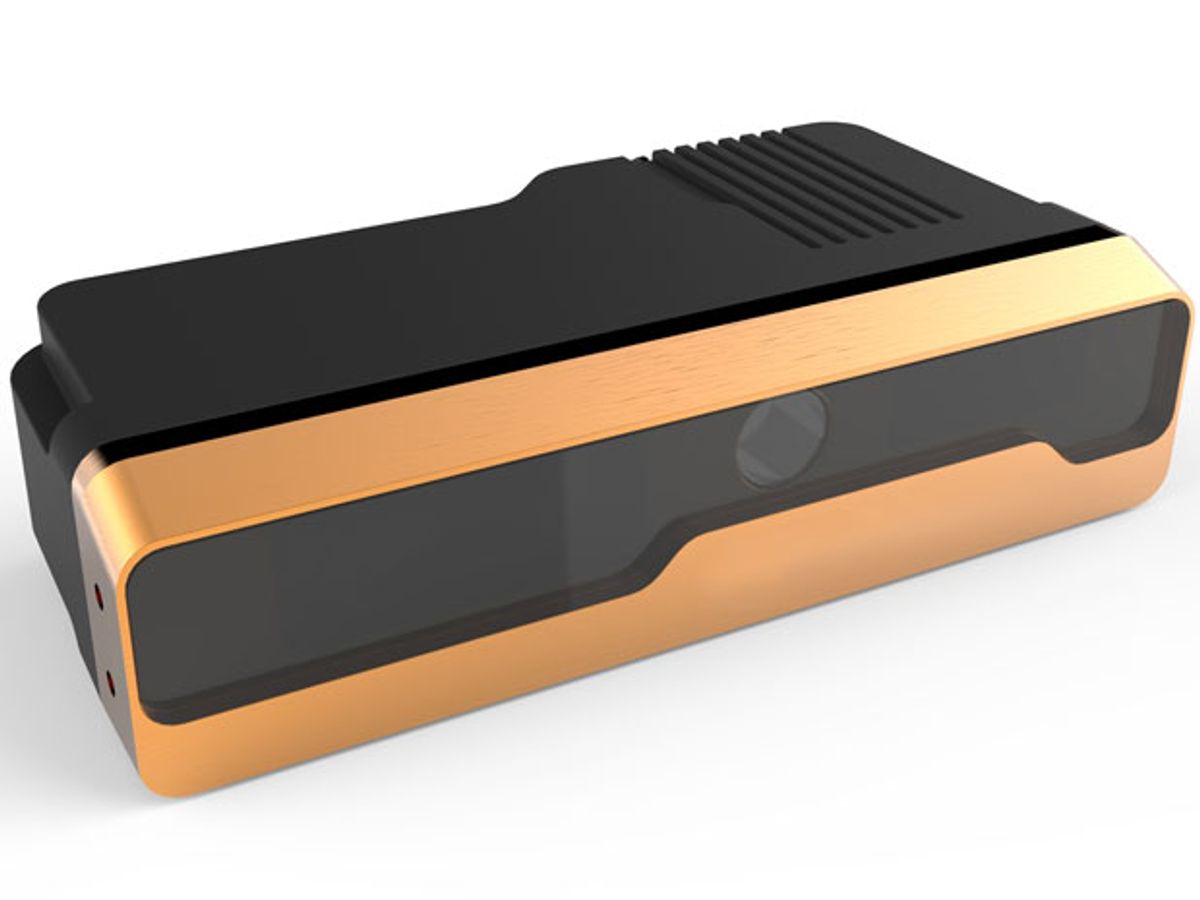A rotating roof-mounted lidar set can cost more than the car underneath it, but soon you’ll be able to get a less powerful—but still useful—unit for the price of a pair of shoes.
“The cost of of a lidar unit is coming down well under $100; one of the concepts I’m working with is a 2-by-8 array—16 photodiodes, with a range of 30 meters,” says Rajeev Thakur, a marketing manager for Osram Opto Semiconductors. The array is wider than it is high because horizontal resolution is what matters most for the intended application: avoiding a forward collision.
It’s a narrow application, one that at first will work well only in slow traffic. It can’t begin to let your car driver itself. But because new regulatory policies in Europe will grade new cars on this feature by 2018, this small array could find a big market.
Osram makes the laser and photoreceptor components from indium gallium arsenide semiconductors. Its partner, the startup Phantom Intelligence, has integrated them into the lidar set, which is about the size of a business card. The entire package is larger, but it can fit on the inside of the windshield, just behind the rear-view mirror.
The little array neither scans mechanically, like a roof-mounted tower, nor electronically, like the experimental setup DARPA unveiled last week. It just bounces infrared light off objects in front and notes the distance and the rate of change in distance.
“With this lidar unit I’m blasting out infrared with one single laser, and I can have an array of photodiodes much more cheaply made than an array of [radar] antennas with fine resolution,” Thakur says.
The laser peaks at a hefty 75 watts, but in 30-nanosecond pulses that together take up just 0.5 percent of transmission time, making the beam safe for the eyes of passersby.
Osram and Phantom Intelligence are talking with potential customers about putting the unit in headlamps to save power. Headlamps are designed to let light through, while windshields carry special coatings to keep certain frequencies—like those in the infrared spectrum—out. True, dirt would tend to accumulate on the headlamp, but that problem can be solved, Thakur says.
Other companies, like Ibeo and TriLumina, are also pursuing the market for cheap automotive lidar. Reason: it’s about to become a mass-market product. In 2018 European safety regulators will start grading new cars on how well they can avoid colliding with a car just ahead of them in slow-moving traffic—precisely the kind that most tends to lull drivers into inattentiveness. Alhough no minimum grade will be mandatory, a good grade will constitute a big marketing incentive. Active-safety devices sell themselves, at least when the price is right.
The U.S. regulator, NHTSA, is reportedly working on a slightly more ambitious grading system for 2019, Thakur says. “They’re also looking for things like cross-traffic alerts,” he says. “You might need to combine sensors like lidar and radar.” Europe has even tougher targets on its industry road map for the year 2020, like recognizing children on the sidewalk as well as pedestrians on the roadway.
Electronic beam-scanning strategies that mimic those of rooftop rotators will come eventually. But the auto industry, famous for its long product development cycles, needs something simple to tide it over in the meantime. That way, the best won’t be the enemy of the good.
Philip E. Ross is a senior editor at IEEE Spectrum. His interests include transportation, energy storage, AI, and the economic aspects of technology. He has a master's degree in international affairs from Columbia University and another, in journalism, from the University of Michigan.



